The WSL Error Code Wsl/Service/CreateInstance/CreateVm/E_INVALIDARG is generally encountered by users while using the Windows Subsystem for Linux(WSL). It is related to configuration, execution problems in WSL, or any other underlying system issue that can hinder running the Linux distribution on a Windows system.
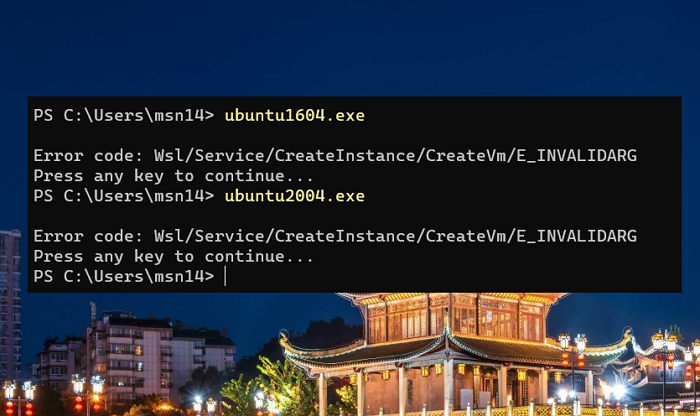
The E_INVALIDARG part of the error under CreateVm relates to a virtual machine instantiation. Here are the possible reasons why it can happen to help you understand about it.
Possible causes for WSL Error CreateVm/E_INVALIDARG
- Virtualization Not Enabled in BIOS/UEFI: The primary reason for the E_INVALIDARG error is the lack of virtualization support in the system’s BIOS/UEFI settings. Since WSL requires virtualization to be enabled to create and run virtual machines, encountering constraints about virtualization support can lead to errors.
- Hyper-V Not Installed or Enabled: Hyper-V virtualization happens to be the process of creating multiple virtual machines in Windows. It can virtualize operating systems and hardware devices like network devices or hard drives. WSL relies on Hyper-V for virtualization on Windows 10 or Windows 11 (Professional Editions). If Hyper-V is not installed or enabled, it can lead to the “E_INVALIDARG” error.
- Corrupted WSL Installation: A corrupted WSL installation can distort the concerned configuration files and lead to the E_INVALIDARG error.
WSl Error Code: Wsl/Service/CreateInstance/CreateVm/E_INVALIDARG
A holistic approach towards resolving the said error would involve checking for the concerned Windows components and their functionalities in the BIOS/UEFI and Windows, apart from resetting the WSL. The possible fixes for the error are detailed below:
- Changing the BIOS/UEFI settings
- Installing or enabling Virtual Machine Platform and Hyper-V
- Reset WSL
- Uninstalling and reinstalling WSL
- Check Distro Configuration
- Checking Windows Event Log
The possible troubleshooting steps that can be executed in pursuit of an effective resolution to the problem are:
1] Changing the BIOS/UEFI settings
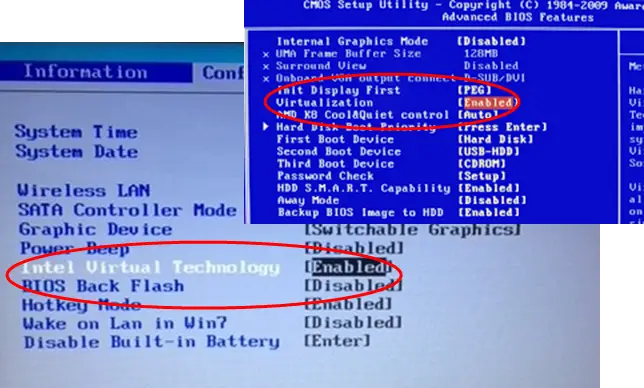
One of the primary troubleshooting measures in pursuit of resolving the E_INVALIDARG is to ensure that no issues are being encountered with the Virtual Machine Platform. To begin with, checking the BIOS/UEFI to ensure that the Virtualization Technology is enabled, the following steps can be initiated:
- Restart the system to enter the BIOS/UEFI settings by pressing (F2, F10, DEL, or ESC, as applicable).
- Select the CPU configuration or related section and ensure that the Virtualization Technology option is enabled.
2] Installing or enabling Virtual Machine Platform and Hyper-V
To resolve the e_invalidarg error, one should check the VM settings since the VM maintains seamless interaction with the WSL. The efficiency and reliability of the WSL can be optimized if the Virtual Machine components are functioning smoothly. Ensuring that the Virtual Machine Platform and Hyper -V is installed and enabled, the below-mentioned steps can be executed:
- Open the Control Panel and choose Turn Windows Feature On or Off under the Programs and Features option.
- Ensure that the Virtual Machine Platform is checked or enabled. If not, enable the same.
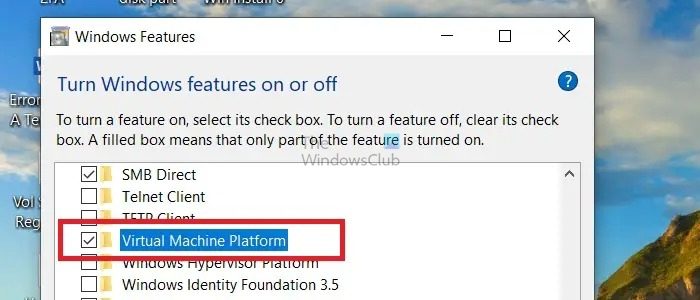
- Also, enable the Hyper-V option from the same list if it’s not enabled.
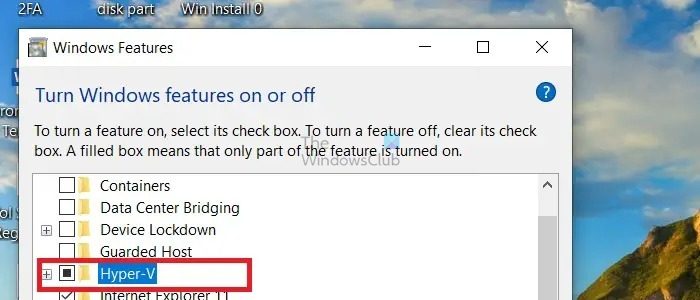
- Restart the system for the changes to take effect.
3] Reset WSL
Potential issues arising from incorrect installation or configuration of WSL, leading to the E_INVALIDARG error, can be corrected by resetting the WSL. If the concerned file system or the environment is corrupted, the WSL commands may cease to execute, giving rise to an invalid argument error.
Hence, resetting the WSL will reinitialize the instances and the associated variables, which can, in turn, help the cause.
By executing the below-mentioned steps, WSL can be reset through the Windows PowerShell:
- Type Windows PowerShell in the desktop search bar and right-click on the matching search result to select Run as Administrator.
- To shut down the WSL, run: wsl -shutdown
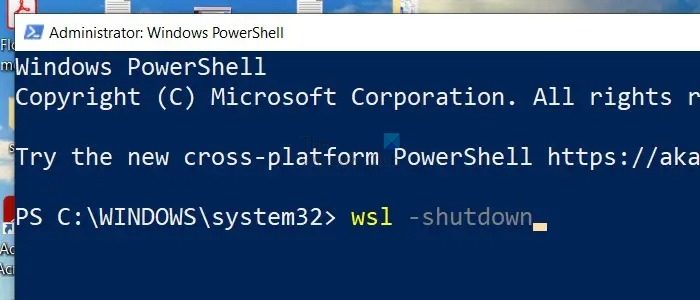
- To unregister the specific distro (distribution) or instance (only if multiple distros are present), run wsl -unregister <DistroName>
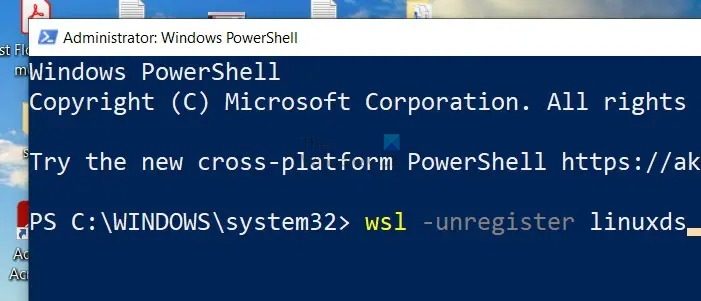
- To reinstall the concerned Linux distribution, run: wsl -install
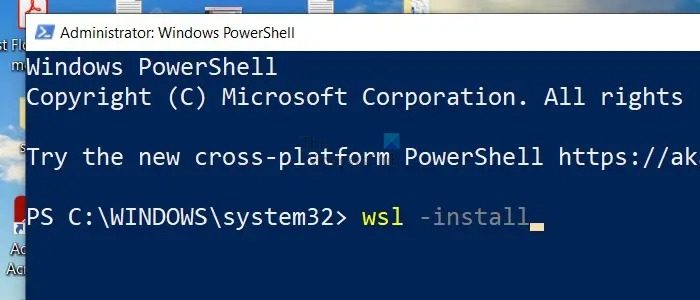
4] Uninstalling and reinstalling WSL
One primary reason for the error can be attributed to corrupt installation or configuration issues regarding the concerned subsystem. As illustrated above, this step can be implemented if the WSL resetting fails to resolve the issue.
Also, WSL relies on various system components and dependencies, which can lead to the aforementioned error if missing or incompatible. Hence, in such situations, uninstalling WSL and reinstalling the same can help eliminate the occurrence of the error in question.
To uninstall and subsequently reinstall WSL, the following steps can be executed:
- Type Windows PowerShell in the desktop search bar and right-click on the matching search result to select Run as Administrator.
- To uninstall WSL, run: wsl -uninstall
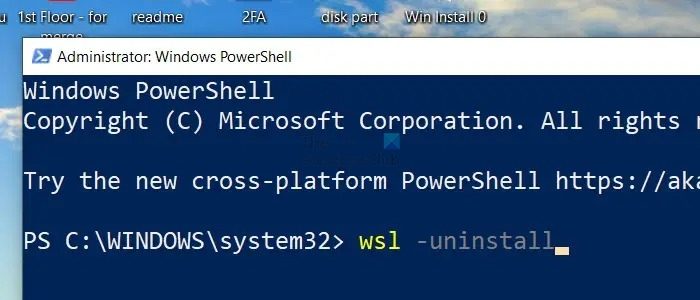
- To reinstall the subsystem, run: wsl -install
5] Check Distro Configuration
The configuration details of an installed Linux distribution are stored in the wsl.conf file under the /etc directory on a per-distribution basis. The said file pertains to the specific Linux distribution, and in situations where the configuration is corrupted, it can lead to the discussed error. To check the status of the distribution:
- Type Windows PowerShell in the desktop search bar and right-click on the matching search result to select Run as Administrator.
- Type wsl -l -v in the Windows PowerShell to check for the list of distributions present in the system along with their version and status.
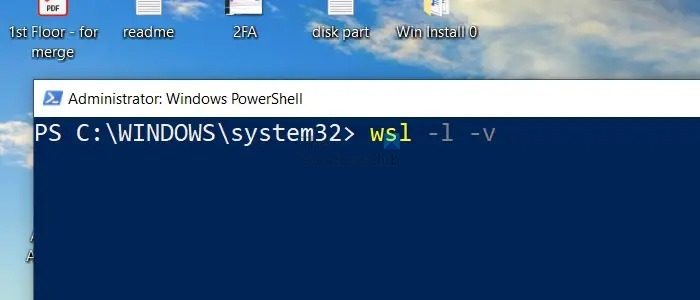
- The result of the above command displays the name and version of the installed distribution along with its state (running/stopped) and the path to the distribution’s root directory.
6] Checking Windows Event Log
If the above-mentioned steps fail to rectify the error, checking the Windows Event Log related to WSL can provide further insight into the error, which can help formulate the solution.
To sum up, the E_INVALIDARG error is generally the result of inconsistent configuration on the part of the WSL. Hence, systematic troubleshooting involving resetting the WSL or uninstalling and subsequent reinstalling of the distribution, apart from checking the status of the distro, can help resolve the issue.
How do I fix the WSL error?
Fixing errors in Windows Subsystem for Linux (WSL) can depend on the specific error message or issue you are encountering. The general solutions include updating, restarting, resetting, and reinstalling WSL.